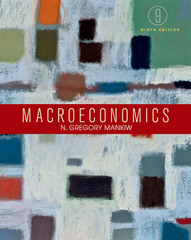Question
Context: Poultry industry The Poultry Processing industry in Australia has encountered a blend of operational circumstances in recent years. Despite a rise in poultry consumption,
Context: Poultry industry
The Poultry Processing industry in Australia has encountered a blend of operational circumstances in recent years. Despite a rise in poultry consumption, intense competition among major supermarkets has curbed the growth of poultry prices, impacting both industry revenue and profitability. Fluctuations in domestic wheat feed prices have further exacerbated cost volatility, compelling processors to consolidate and restructure in order to enhance productivity and profitability. Over the five-year period leading up to 2023-24, revenue within the Poultry Processing industry is projected to experience a marginal annual growth rate of 0.1%, reaching a total of $8.8 billion. However, a decline of 3.7% in revenue is anticipated for 2023-24, largely influenced by shifts in poultry prices. These challenges have prompted processors to streamline their operations and actively pursue avenues to maintain their competitiveness within the market.
Your task is to develop a short report addressing the following points:
- Analyse the market structure for poultry meat industry in Australia.
- Discuss the implications of the identified market structure on pricing strategies, consumer choice, and industry performance.
- Select another market structure different from the one present in the poultry industry (e.g., perfect competition, monopoly, oligopoly, monopolistic competition). Compare and contrast the market structure of the poultry industry with the chosen market structure. Emphasize similarities and differences in terms of firm behavior, pricing strategies, consumer welfare, and industry performance, supported by economic theory and real-world examples.
- Is the poultry meat industry better off operating in a monopolistically competitive market rather than a perfectly competitive one?Support your discussion and argument(s) using relevant microeconomic theory/theories in a graph(s) and explain your arguments. In your response, discuss monopolistic competition considering both short-run and long-run economic profit. (draw a graph to explain)
- Illustrate how advertising or promotional campaigns, such as the use of a marque and advertising indicating a poultry is '100% organic', can impact a firm's costs and profits if they are successful.Support your discussion and argument(s) using relevant microeconomic theory/theories in a graph(s) and explain your arguments. (draw a graph to explain)
- Explain, using microeconomic theory/theories, and illustratein a graph(s), the likely short-run and long-run effects of the unfavourable market conditions caused by increased in poultry feed on a firm's profit and output. (draw a graph to explain)
- Price elasticity of demand provides information about consumers' likely responses to a price change, which is particularly important when setting maximum prices for essential goods and services. Using the data provided below, calculate the price elasticity of demand for chicken based on the mid-point method. Present your calculations in a table.Explain your result. Research possible reasons for your estimated price elasticity of demand and include these in your analysis.
| Year | Price (per kg) | Quantity Demanded (Tonnes '000) |
| 2008 | 11 | 1210 |
| 2009 | 11.5 | 1010 |
| 2010 | 11 | 1255 |
| 2011 | 11.5 | 1095 |
| 2012 | 12 | 1251 |
| 2013 | 12.5 | 1020 |
| 2014 | 11.5 | 1475 |
| 2015 | 11 | 1805 |
- Assume that one major poultry producer is merging with another large producer to increase market share. Explain the impact on this market equilibrium and price, consumer surplus and producer surplus.
- The table below sets out the market demand schedule and total cost schedule for your company's poultry production. Construct the company's total revenue, marginal revenue, and marginal cost schedule. Calculate the firm's economic profit. Graphically illustrate these and mark the profit-maximising quantity and price. Using your graph, calculate the consumer surplus and explain your results.
Price (dollars per kg) | Quantity demanded (Kg per week) | Total Costs (dollars per week) |
13 | 0 | 0 |
| 12 | 100 | 1000 |
| 11 | 200 | 1800 |
| 10 | 300 | 2100 |
| 9 | 400 | 2700 |
| 8 | 500 | 3500 |
Step by Step Solution
There are 3 Steps involved in it
Step: 1

Get Instant Access to Expert-Tailored Solutions
See step-by-step solutions with expert insights and AI powered tools for academic success
Step: 2

Step: 3

Ace Your Homework with AI
Get the answers you need in no time with our AI-driven, step-by-step assistance
Get Started


